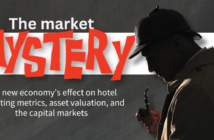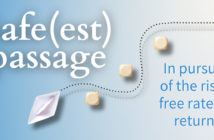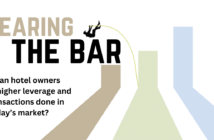Inflation continues to be the talk of the town, especially within interest-rate-sensitive industries like hospitality and commercial real estate. Today’s environment, however, looks very different than what we’ve seen during the past 15 years. In fact, it’s only the second time we’ve seen such conditions since WWII. Because interest rates drive capital markets, investors’ room for error diminishes when rates go up. These rate increases also impact capital allocators’ returns on both debt and equity. As a result, no capital participant is immune from the effects of rising interest rates, including construction lenders, credit unions, debt funds relying on a warehouse line of credit, small local or regional banks working with the Federal Reserve discount window, or life insurance companies beholden to deliver higher investor returns. Bottom line, rate increases are a systemic change that reverberates throughout the entire market. With a mass of CMBS and bank loans maturing in the next 12 to 18 months, understanding the changing options and having a subject matter expert by your side is critical for success.
LONG-TERM FIXED RATE LOANS
Because long-term rates are lower than short-term rates due to the inverted yield curve, many owners are refinancing their stabilized asset’s floating rate bank loans to 10-year fixed rate loans with life companies and CMBS lenders, while also removing recourse. This strategy is prudent for large portfolios of assets that have withstood the pandemic, renewed their demand drivers, and have strong trailing 12-month cashflows. Their owners take advantage of a short window where cap rates are lower than what they may be in the future. This offers a decent portfolio valuation and borrowers can take cash out and recapitalize most, if not all, of their equity while still holding onto the assets. Owners also may benefit from a potential bump in revenue, as well value that might result due to inflation.
With a mass of CMBS and bank loans maturing in the next 12 to 18 months, understanding the changing options and having a subject matter expert by your side is critical for success.
Owners can use this strategy to garner almost infinite return on their equity, as most of their investment is cashed out. The dry powder yielded from these cash outs can ignite exponential growth in case of an economic slowdown or market distress.
Yes, CMBS loans can be onerous and less flexible. They are best used by institutional grade sponsors who have robust reporting and can pay their debt on time. Recent tweaks based on lessons learned during the pandemic, however, have brought more clarity and responsiveness to the servicing process.
LOWER PRICED FIVE-YEAR CMBS LOAN
Select CMBS shops are rolling out a new fixed-rate loan program focused solely on five-year CMBS paper. The five-year loans are only gathered with other five-year loans, eliminating the need for a premium. At the time of writing, these loans were at 0.75% lower spread than a comparable five-year CMBS loan. A lower spread combined with a lower five-year SOFR index results keeps rates for these loans relatively low, and is more palatable for owners looking to acquire or refinance stabilized properties.
FLOATING-RATE LOANS
Floating-rate loans typically are interest-only with a two- to three-year term and used to finance transitional assets that haven’t achieved stabilization. These loans can offer slightly higher leverage on the front end (up to 75% of total cost of value) and can be used to pay off higher priced mezzanine debt or preferred equity, or to reduce the amount of equity needed when acquiring assets. Lately, however, owners and investors are looking to floating-rate loans to ride out the storm that continues to cloud the markets. Because the loans typically require only a 12-month minimum interest period, a borrower could refinance the loan after the first year without penalty. Those who believe higher interest rates are temporary and will be followed by an era of lower interest rates can use a floating-rate loan to bridge the time between hyper-inflation and a recession.





